We started our fall flower rotation yesterday, so our training for the crews this morning focused on how to fill out the paperwork correctly for each installation, and a quick review of the plants we covered over the last three weeks. So, while we wait for some gorgeous pictures of the fall flowers to start coming in from the field later this month, I wanted to do something a little different today.
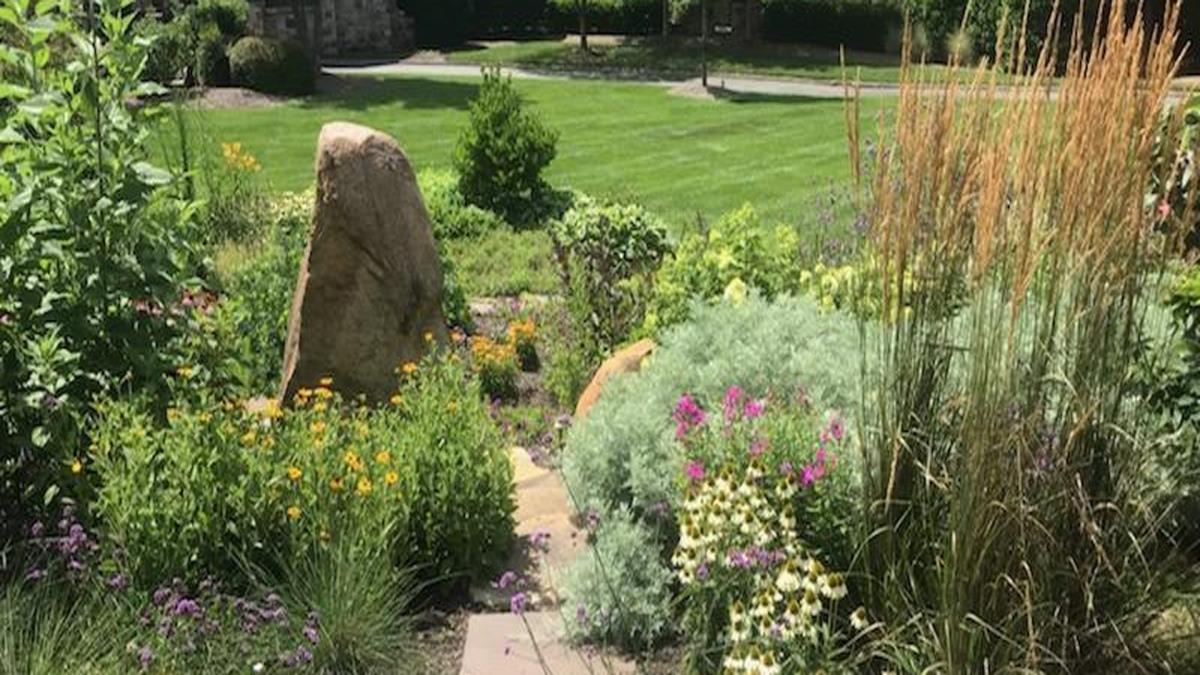 Perennial garden with a mix of over 125 different species and cultivars.
Perennial garden with a mix of over 125 different species and cultivars.
Today I am showcasing pictures from some perennial gardens that I designed last year, so you can see how perennials change to offer something new each season (although unfortunately I don’t have any winter pictures yet–Coming in January?). The perennials shown are growing on a property in the Deep River Triassic Basin, which means the soils are primarily shrink-swell clays in which it is very challenging to grow plants and build structures (see image below).
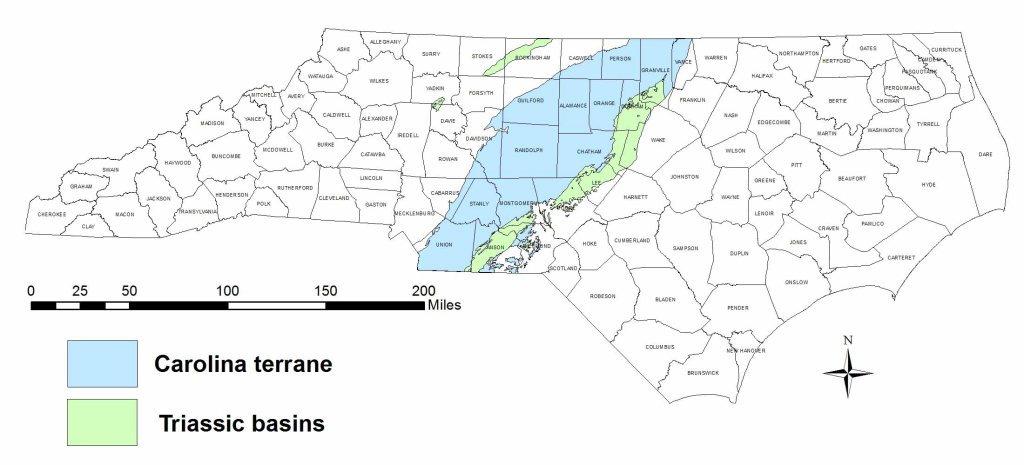 Image Source: NC Department of Environmental Quality
Image Source: NC Department of Environmental Quality
Gardeners in NC are very familiar with the challenges of growing perennials in our area–the hot, humid summers, challenging clay soil, periods of extreme drought or extreme wet, and winter temperatures that seemingly fluctuate between the 70s and 20s daily. I hope you can find hope and inspiration for your own garden in the photos I share in this post.
Growing Conditions
These images show perennials that have been established approximately 14 months in this location. Some were transplants, but most were 1-gallon size container-grown nursery stock. The soil was amended with organic matter prior to planting, and the beds are mulched with leaf mulch, which continuously adds more organic matter to the soil and allows for easier regrowth in the spring (shredded wood mulch can form thick mats that are difficult for perennials to sprout through). There is an irrigation system in place to provide regular water, but there are dry and wet microclimates within the gardens.
Perennials: Cultivars and Combinations
-
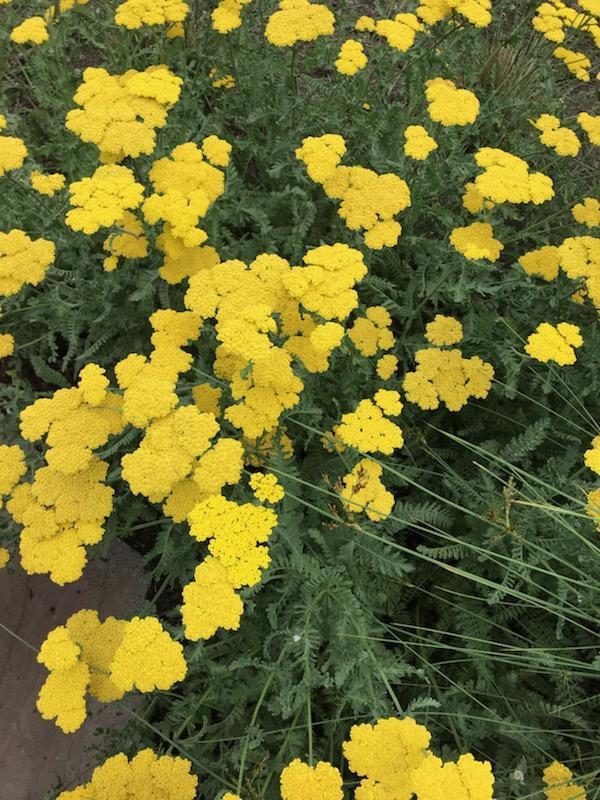 Achillea millefoliium ‘Moonshine’
Achillea millefoliium ‘Moonshine’
-
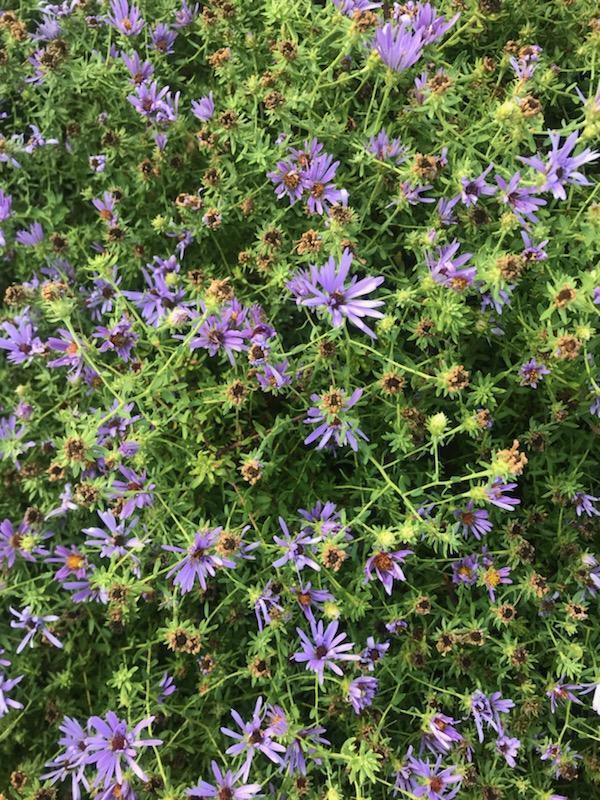 Verbena bonariensis
Verbena bonariensis
-
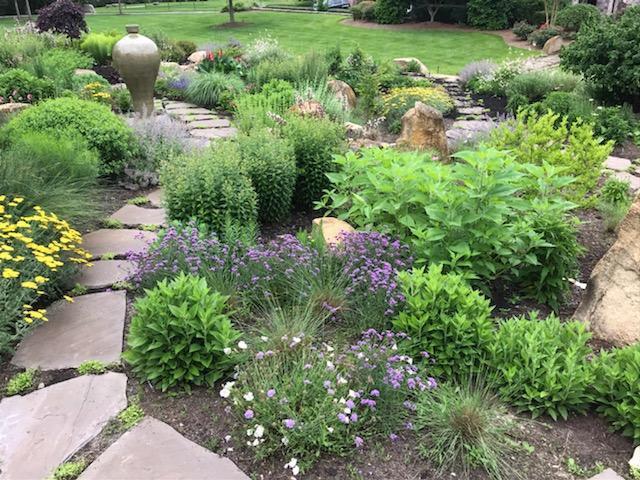 Verbena bonariensis and Scabiosa (unknown cultivar) bloom with Solidago, Rudbeckia, and Muhlenbergia just starting to fill in.
Verbena bonariensis and Scabiosa (unknown cultivar) bloom with Solidago, Rudbeckia, and Muhlenbergia just starting to fill in.
-
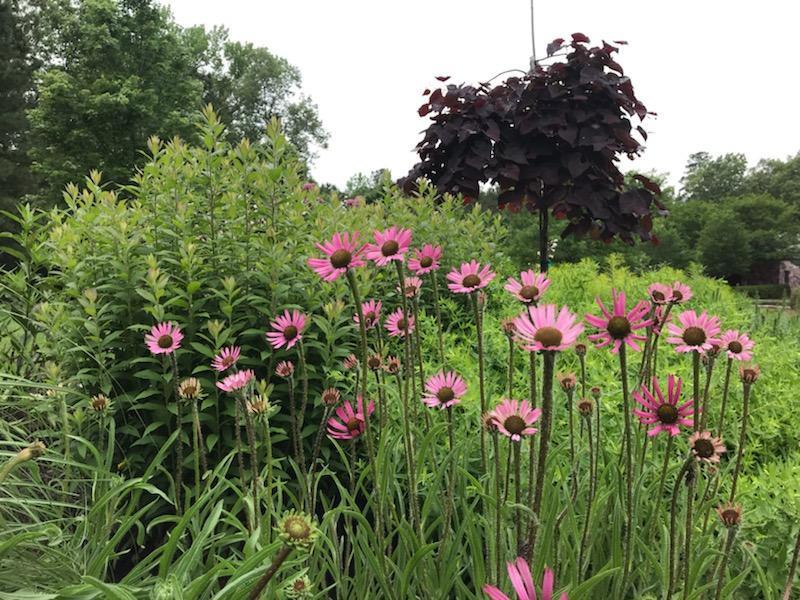 A rare species of coneflower, Echinacea tennesseensis
A rare species of coneflower, Echinacea tennesseensis
-
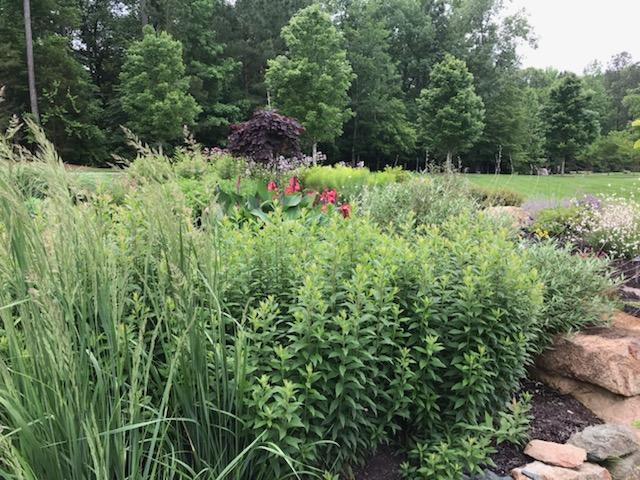 Late Spring colors are a wide palette of soft greens, with gentle textures.
Late Spring colors are a wide palette of soft greens, with gentle textures.
-
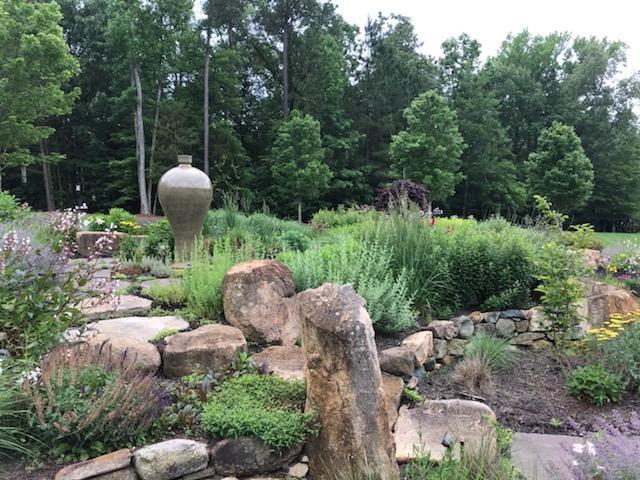 Love these mint green colors from the Russian sage…
Love these mint green colors from the Russian sage…
-
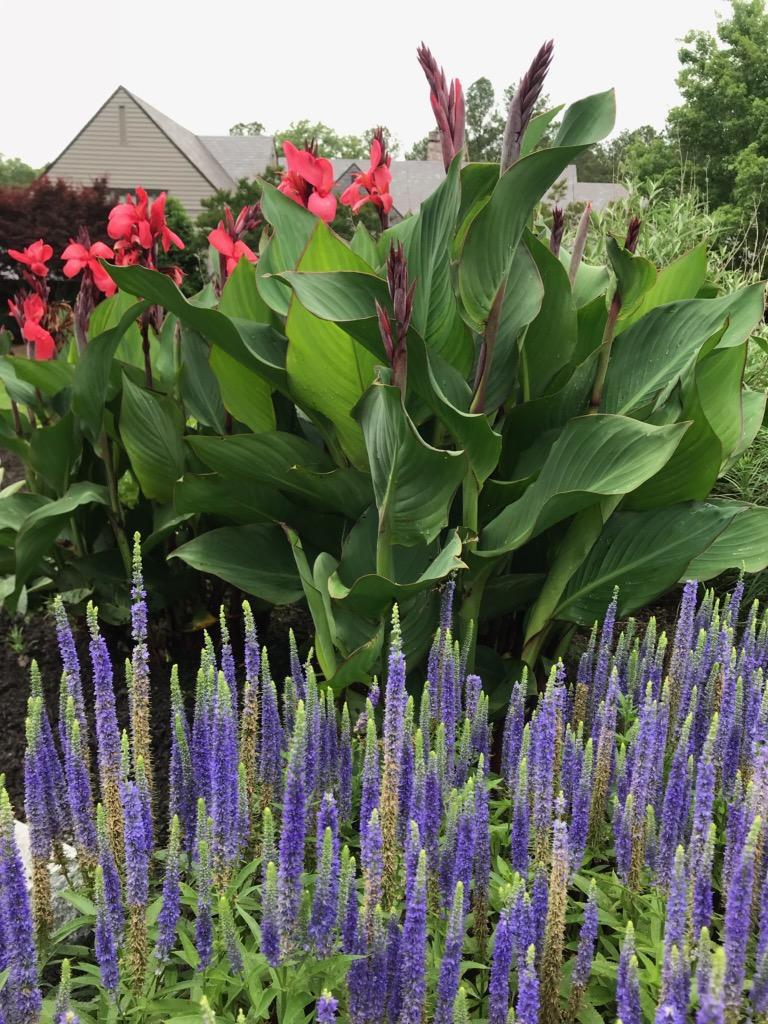 This canna overwintered with no problems, as anticipated. Extra leaf mulch in the late fall can help give winter protection. Veronica spicata ‘Royal Candles’ in front.
This canna overwintered with no problems, as anticipated. Extra leaf mulch in the late fall can help give winter protection. Veronica spicata ‘Royal Candles’ in front.
-
 Nepeta subsessilis ‘Blue Dreams’ in front of Hemerocallis ‘Stella de Oro’
Nepeta subsessilis ‘Blue Dreams’ in front of Hemerocallis ‘Stella de Oro’
Late Spring. These photos were taken on May 24, 2019.
Spring is not the showiest time of year for perennials, but if you layer in some early bloomers, you can play up the softer shades and textures of green growth. Adding some small evergreens, such as lavender, rosemary, boxwood, or Japanese serissa can help create structure.
-
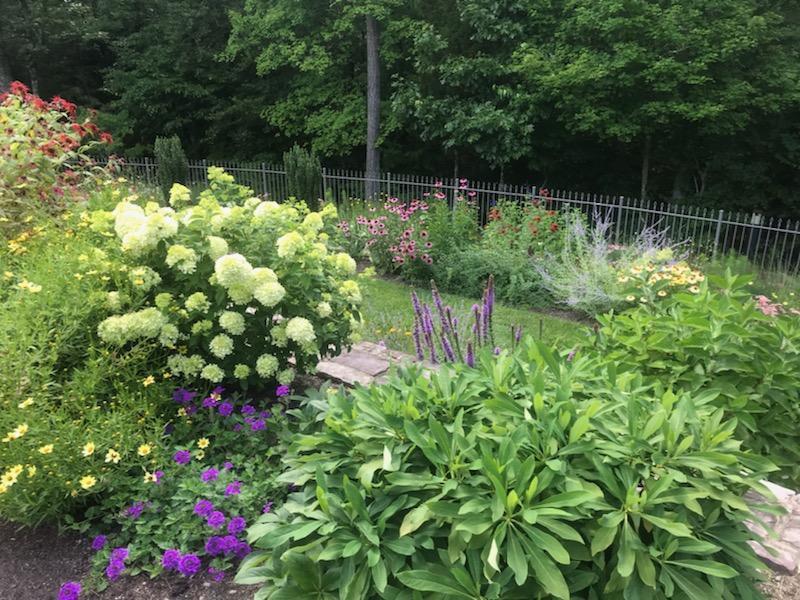 Hydrangea p. ‘Little Lime’ with Edgeworthia papyrifera in the foreground.
Hydrangea p. ‘Little Lime’ with Edgeworthia papyrifera in the foreground.
-
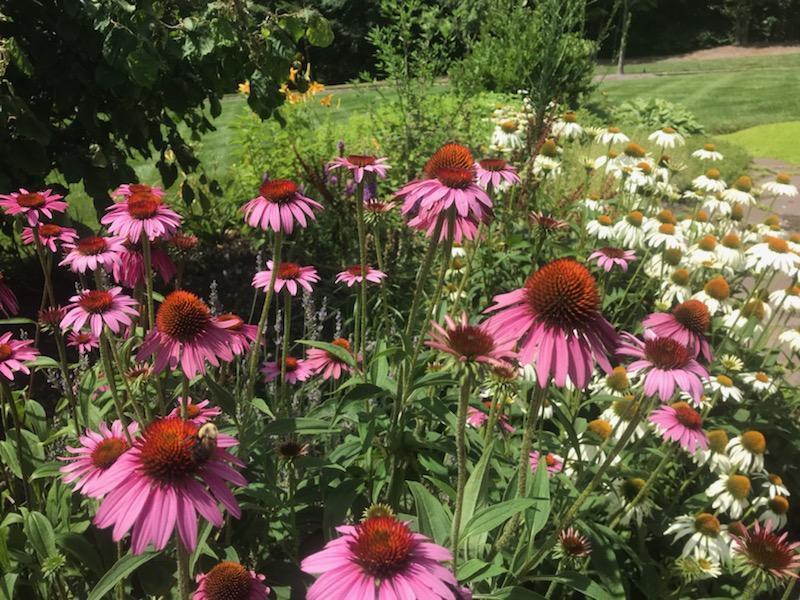 Coneflowers for days…
Coneflowers for days…
-
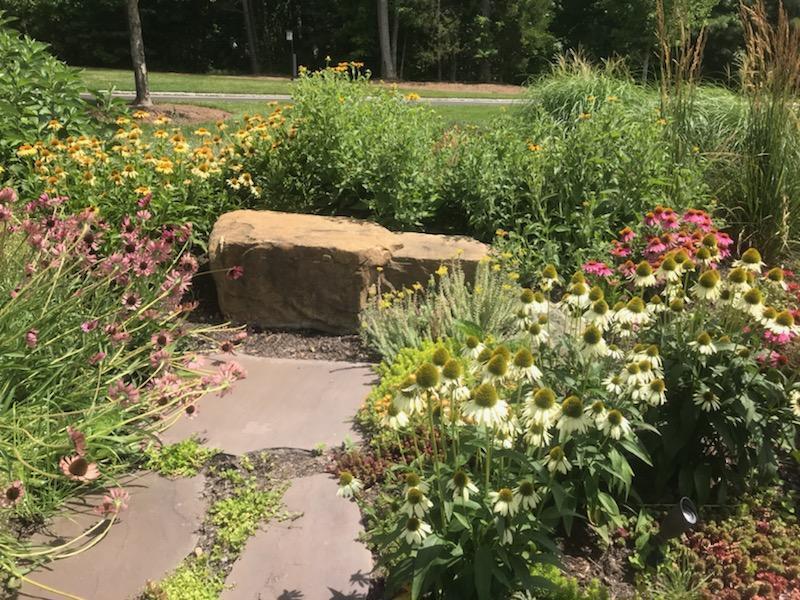 This is an echinacea collection surrounding a sitting boulder. Cultivars listed below.
This is an echinacea collection surrounding a sitting boulder. Cultivars listed below.
-
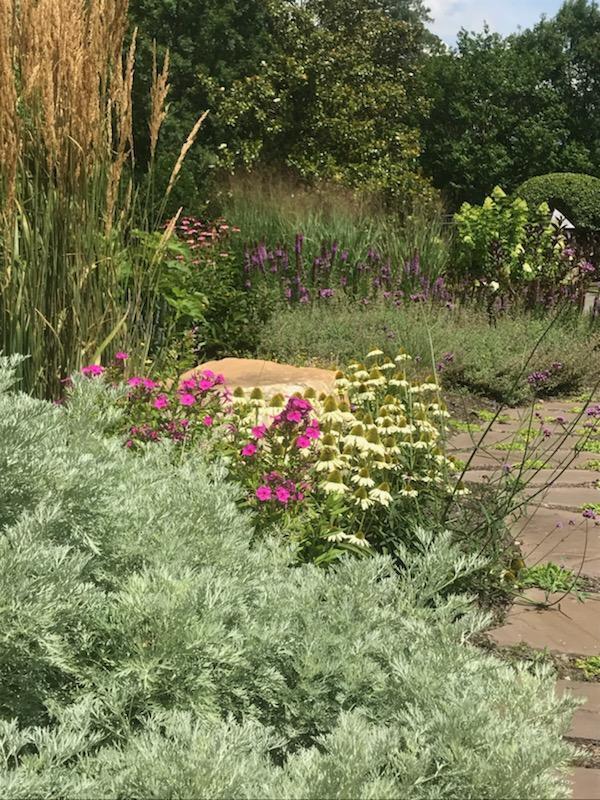 Artemisia x ‘Powis Castle’, Phlox paniculata (cultivar unknown), Echinacea ‘Powwow White’, Calamagrostris ‘Karl Foerster’, with Verbena bonariensis peeking out.
Artemisia x ‘Powis Castle’, Phlox paniculata (cultivar unknown), Echinacea ‘Powwow White’, Calamagrostris ‘Karl Foerster’, with Verbena bonariensis peeking out.
-
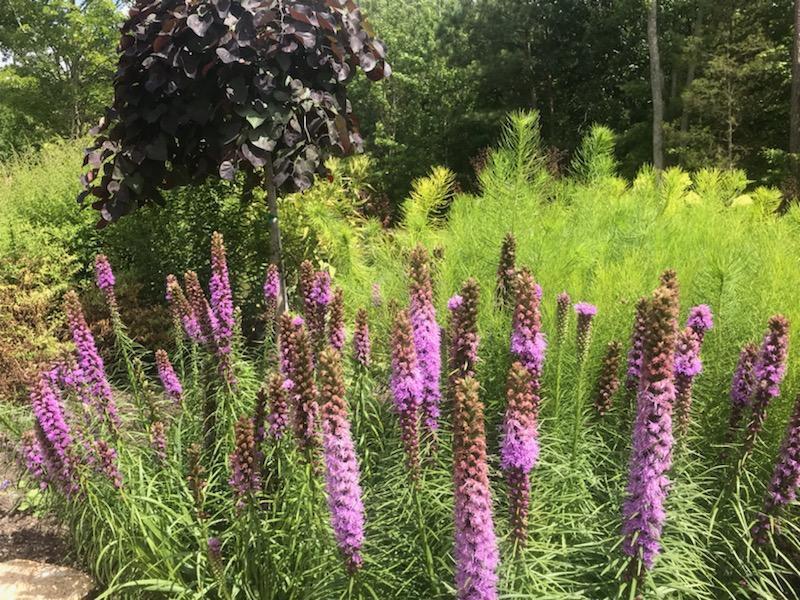 Layers of feathery textures. Liatris spicata ‘Kobold’, Amsonia hubrichtii, and Cercis ‘Ruby Falls’ in the background.
Layers of feathery textures. Liatris spicata ‘Kobold’, Amsonia hubrichtii, and Cercis ‘Ruby Falls’ in the background.
-
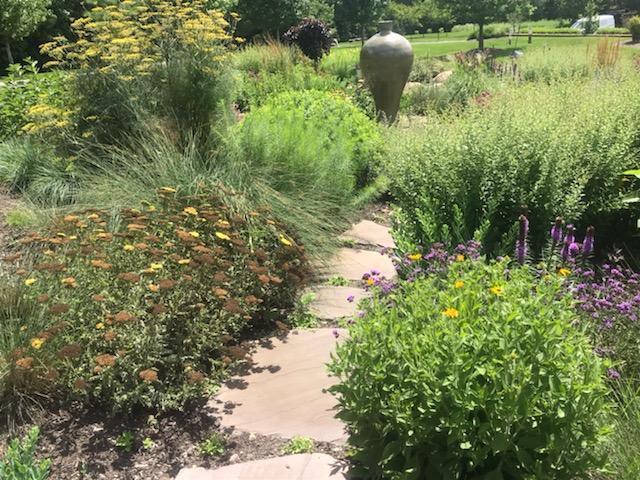 Bronze fennel (top left) is not only a beautiful and aromatic plant, it’s also a host plant for black swallowtail caterpillars.
Bronze fennel (top left) is not only a beautiful and aromatic plant, it’s also a host plant for black swallowtail caterpillars.
Summer. These photos were taken June 28, 2019.
In summer, many perennials are in full bloom and pollinators are at their most active. Make sure to provide host plants as well as nectar plants. Don’t worry too much about removing the spring flowers that are starting to brown out; even the brown dried flowerheads or seed stalks can have a very attractive shape or texture.
Echinacea Species & Cultivars:
- Echinacea tennesseensis
- Echinacea purpurea ‘Kim’s Knee High’
- Echinacea x ‘Harvest Moon’
- Echinacea x ‘Pow Wow White’
- Echinacea x ‘Cleopatra’
- Echinacea x ‘Pow Wow Wild Berry’
- Echinacea purpurea ‘White Swan’
- Echinacea x ‘Sombrero Sandy Yellow’
- Echinacea purpurea ‘Magnus’ (this is my best guess–they were transplants)
-
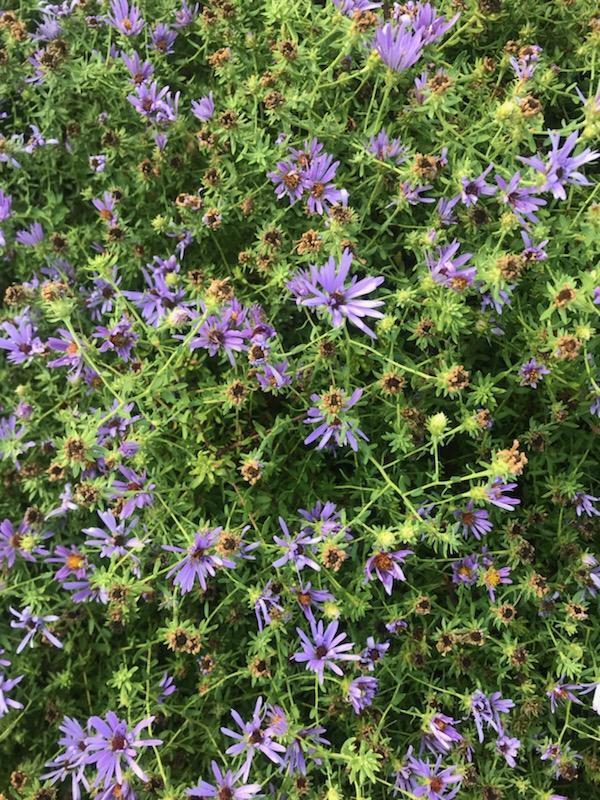 Aster nova-angliae ‘October Skies’
Aster nova-angliae ‘October Skies’
-
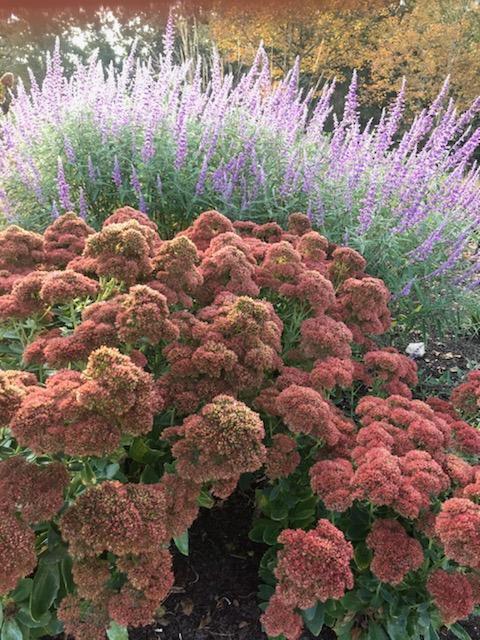 Back: Salvia leucantha
Back: Salvia leucantha
Front: Sedum ‘Autumn Joy’
Notice how the pale lavender draws out rosier tones in the sedum.
-
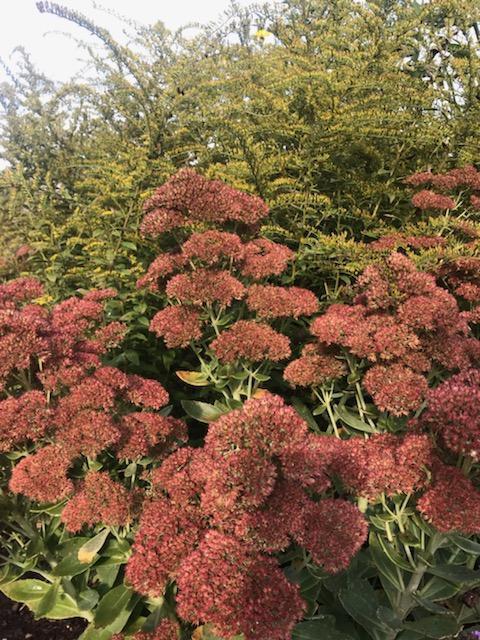 Back: Solidago ‘Fireworks’
Back: Solidago ‘Fireworks’
Front: Sedum ‘Autumn Joy’
Notice how the yellow draws out rust and burnt orange tones in the sedum.
-
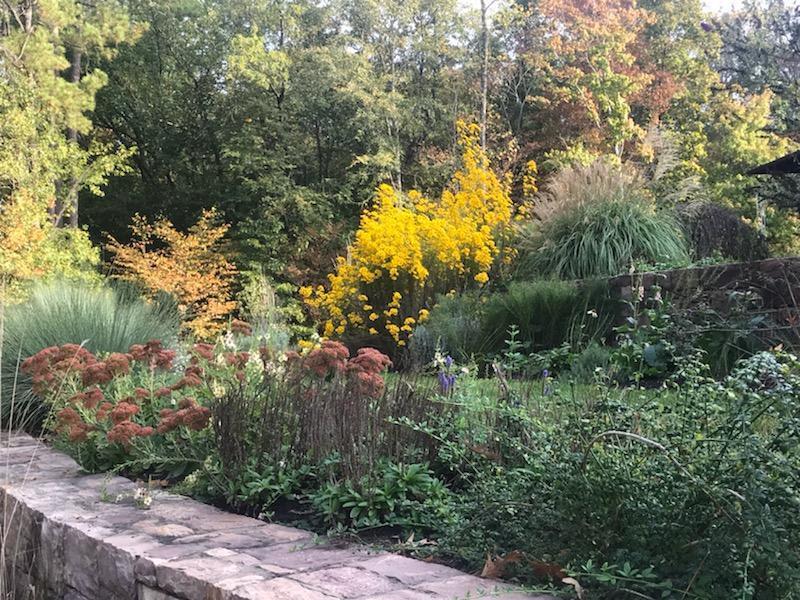 Fall textures and warm colors.
Fall textures and warm colors.
-
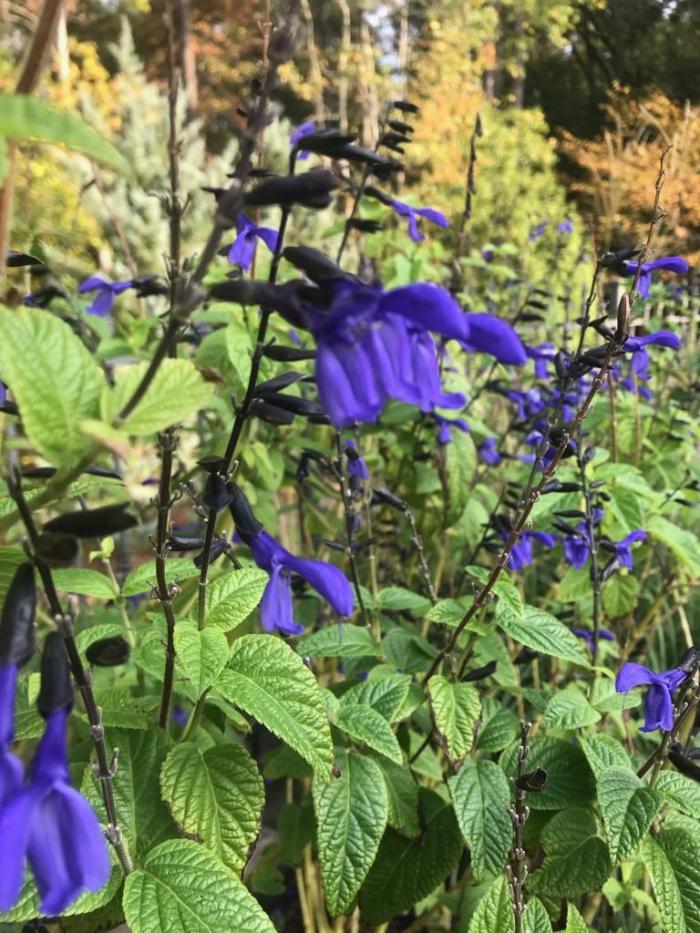 Salvia ‘Black and Blue’
Salvia ‘Black and Blue’
-
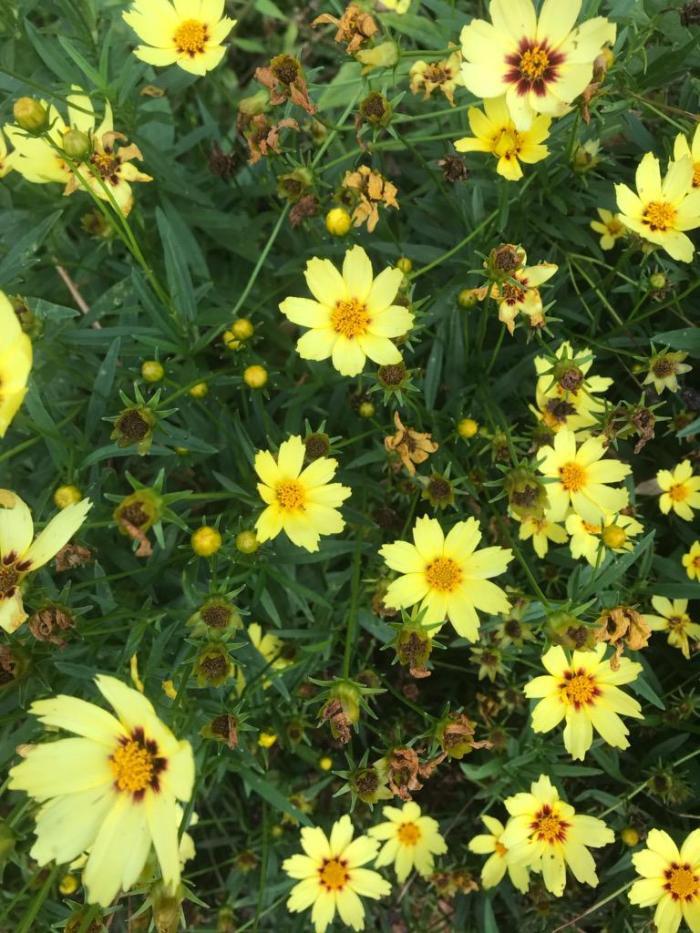 Coreopsis ‘Red Shift’
Coreopsis ‘Red Shift’
-
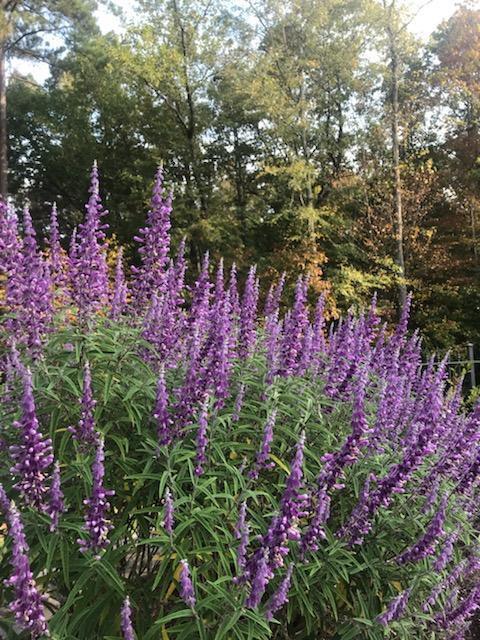 Salvia leucantha flowers are fuzzy like velvet
Salvia leucantha flowers are fuzzy like velvet
-
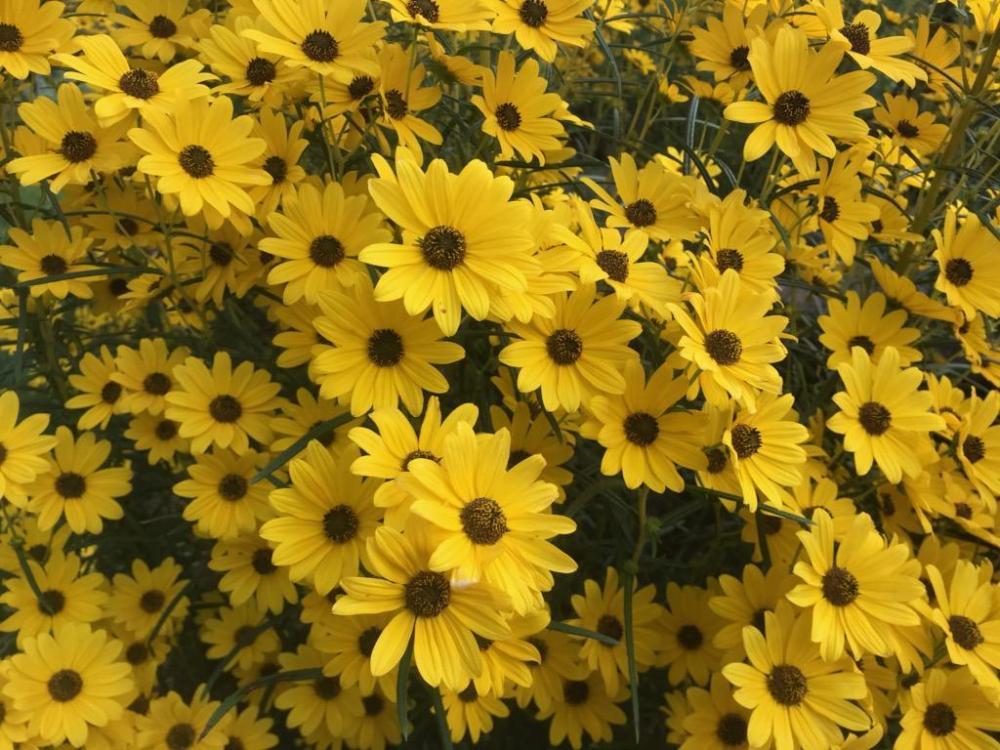 Helianthus ‘First Light’
Helianthus ‘First Light’
-
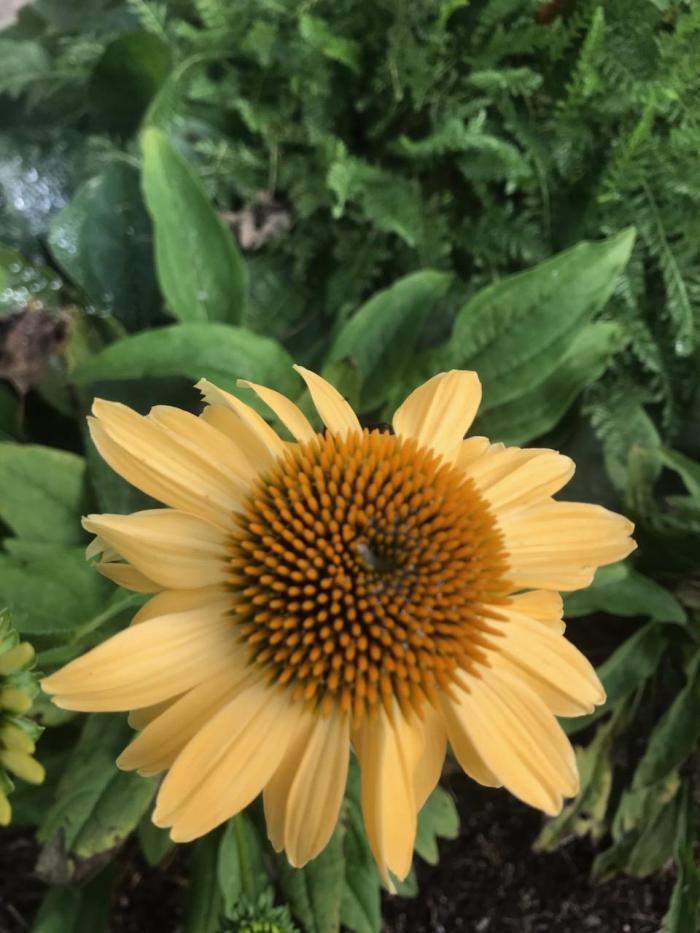 Echinacea ‘Sombrero Sandy Yellow’
Echinacea ‘Sombrero Sandy Yellow’
-
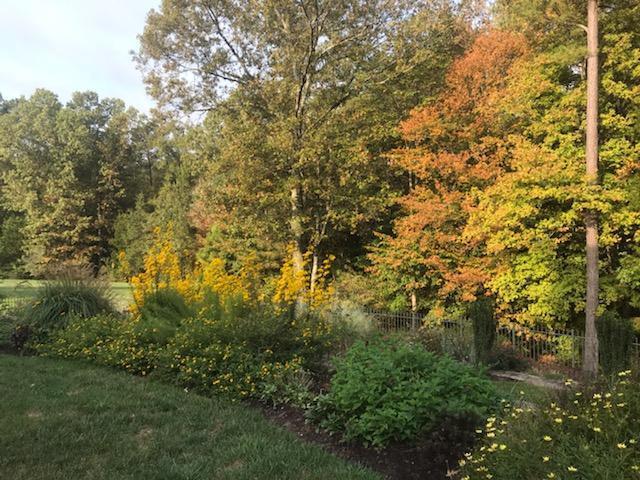 The warm tones of the perennials complement the trees starting to change color.
The warm tones of the perennials complement the trees starting to change color.
Fall. These photos were taken October 1, 2019.
Salvias are perhaps my favorite fall perennial. Mexican sage (Salvia leucantha) and black and blue sage (Salvia guaranitica ‘Black and Blue’) are only borderline hardy in this area, in fact many plant reference guides list them for zones 8-10. But North Carolinians are often lucky when pushing the envelope with more tender plants, since the Triangle is within the transition zone of 7b/8a. In a brutal winter, these might not survive, but it’s certainly worth it to try.
Out of the fall group, the one that surprised me most was Helianthus salicifolius ‘First Light’, the willow-leaved sunflower. It exploded with flowers when everything else was starting to slow down, and the stalks did a great job staying tall and upright. In a world where it seems like available cultivars grow more compact and dwarfed every year, it’s refreshing to find something tall that can create a wow-factor at the back of a border. It’s also a great nectar source for butterflies and bees, and if you leave the dead flowerheads, birds will eat the seeds in late fall and winter.
I will certainly try to get some good winter pictures as well. For now, I hope you feel inspired! Remember, fall is the best time for planting…
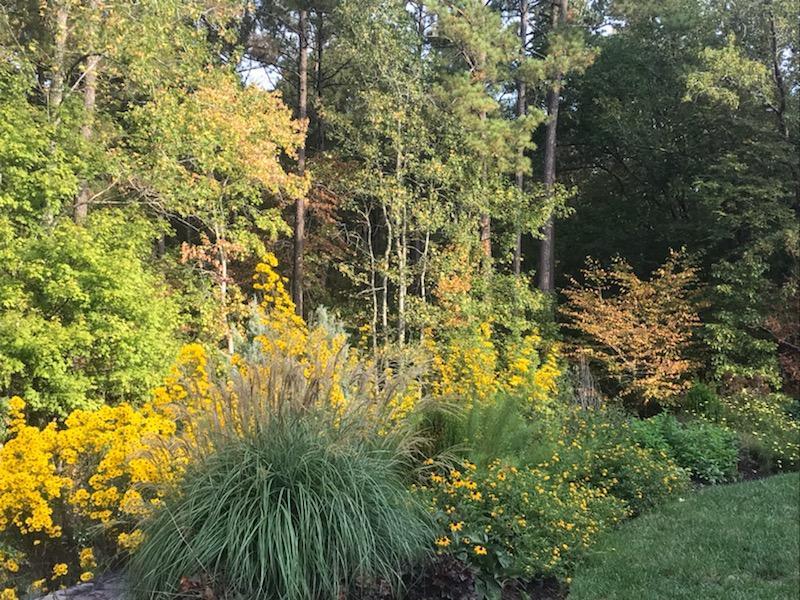 Happy Fall!
Happy Fall!
Note: Thanks to Herbie Champion for taking all of these great photos!